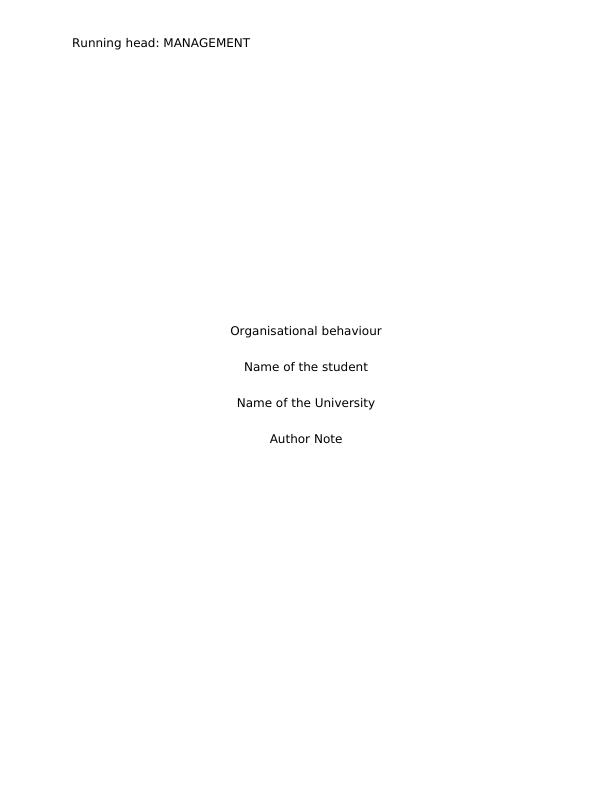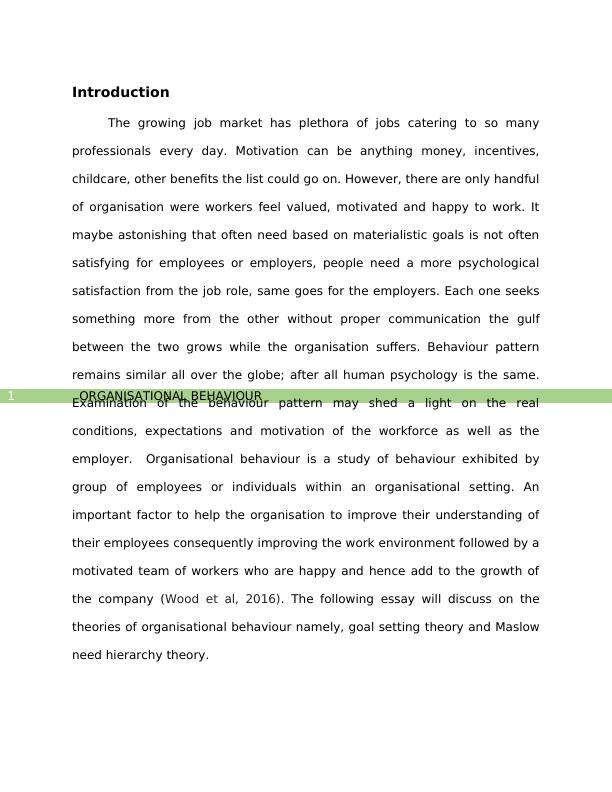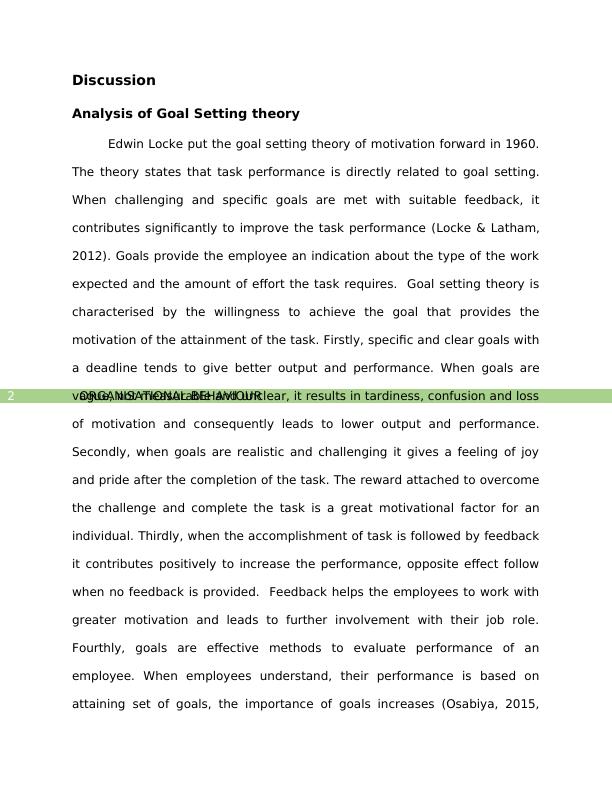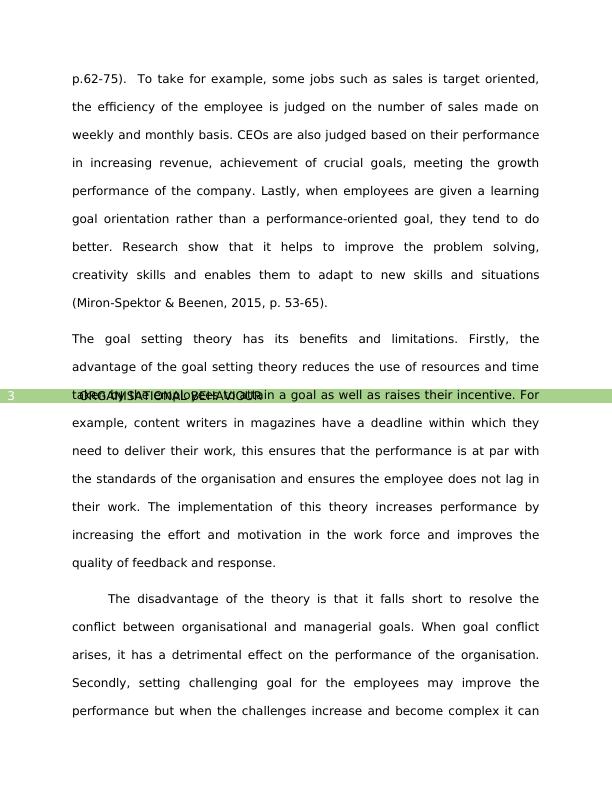An Organisational Behaviour Approach to Management
The purpose of this essay is to analyze two key organizational behavior theories, concepts or frameworks to be used in the group assignment. The essay requires research and critical analysis of the chosen theories in the context of organizational behavior.
13 Pages2727 Words321 Views
Added on 2022-10-17
About This Document
It maybe astonishing that often need based on materialistic goals is not often satisfying for employees or employers, people need a more psychological satisfaction from the job role, same goes for the employers. An important factor to help the organisation to improve their understanding of their employees consequently improving the work environment followed by a motivated team of workers who are happy and hence add to the growth of the company (Wood et al, 2016). The following essay will discuss on the theories of organisational behaviour namely, goal setting theory and Maslow
An Organisational Behaviour Approach to Management
The purpose of this essay is to analyze two key organizational behavior theories, concepts or frameworks to be used in the group assignment. The essay requires research and critical analysis of the chosen theories in the context of organizational behavior.
Added on 2022-10-17
ShareRelated Documents
End of preview
Want to access all the pages? Upload your documents or become a member.
Organizational Behaviour: McClelland and Maslow's Theory
|10
|2610
|1
Theories of Motivation and Engagement
|12
|2990
|74
Pros and Cons of Monetary Rewards in Employee Motivation
|8
|2286
|24
Organisational Behaviour
|11
|2701
|1
Employee Motivation and Organizational Performance
|9
|2544
|228
The Only Thing That Affects Employee Motivation is the Level of Pay
|8
|2078
|110




